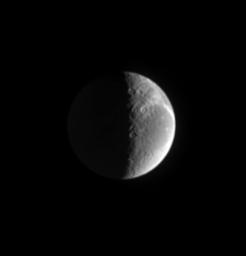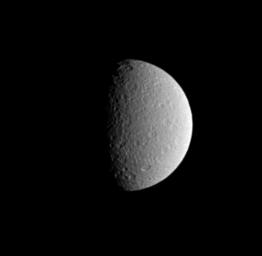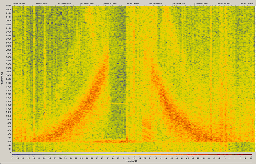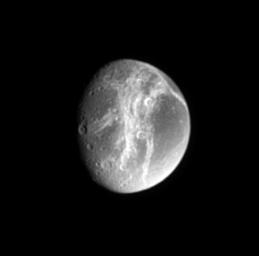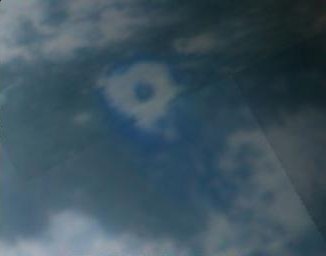
I am in complete shock. The VIMS team ACTUALLY released a Titan image. This must mean the end of the world is nigh. Given this news, I shall build a bomb shelter and pray... And they included so far unreleased RADAR data. How'd they spring that? I wish we could do that with our images....
Seriously, this is a pretty interesting release. This release shows the VIMS view of an 80-km wide crater first seen by
RADAR and then by
ISS during the T4 flyby on March 31. This view, taken by VIMS during the T5 flyby on April 16, confirms the ISS result that the crater is indeed filled with dark material, perhaps material thin enough for the RADAR beam to pass through. In addition, VIMS sees the bright spot at the center of the crater, again seen by ISS (though not this prominently).
One of the main puzzles the ISS team has encountered when comparing this feature in our images with how it is seen by RADAR (center panel in VIMS release, see RADAR release from February or the
Stanford RADAR site for a full resolution, though poorer stretch view). The ejecta blanket surrounding the crater has a different shape in RADAR (which shows how smooth or how rough a terrain area is) and in ISS (which sees only brightness variations). In ISS, this blanket is much smaller and has a more rounded shape, while the RADAR bright island surrounding the crater has a more parabolic shape, consistent with the parabolic blankets surrounding some Venusian craters. The false color VIMS image resolves this. Like ISS, VIMS see only albedo (though they maybe able to see topographic shading...at 5 microns). But VIMS has multiple methane windows to work with, and might be able to detect compositional and/or grain size variations. In the color image, a brighter blue halo, curiously in the shape of the RADAR-bright (and thus rough) island. What this tells us is that the RADAR parabola is made of materials with different albedos. This outer portion, consisting of material nearer the surface at the time of the crater's formation, is likely made of organics with little water ice, while the inner region consists of material derived from deeper within Titan. This picture that this view creates is one where the impactor crashed in the "H" region, first digging up the organic layer and spewing that farther from the crater, then punching through to the water ice beneath, depositing it closer to the impact site. So to VIMS and ISS, we see two different zones of material thanks to the two different compositions, while RADAR sees only one, very rough unit. I'm not much of a crater, but maybe the depth of the dark material can be estimated by finding out how much of the material ejected was water ice and how much was dark organics.

